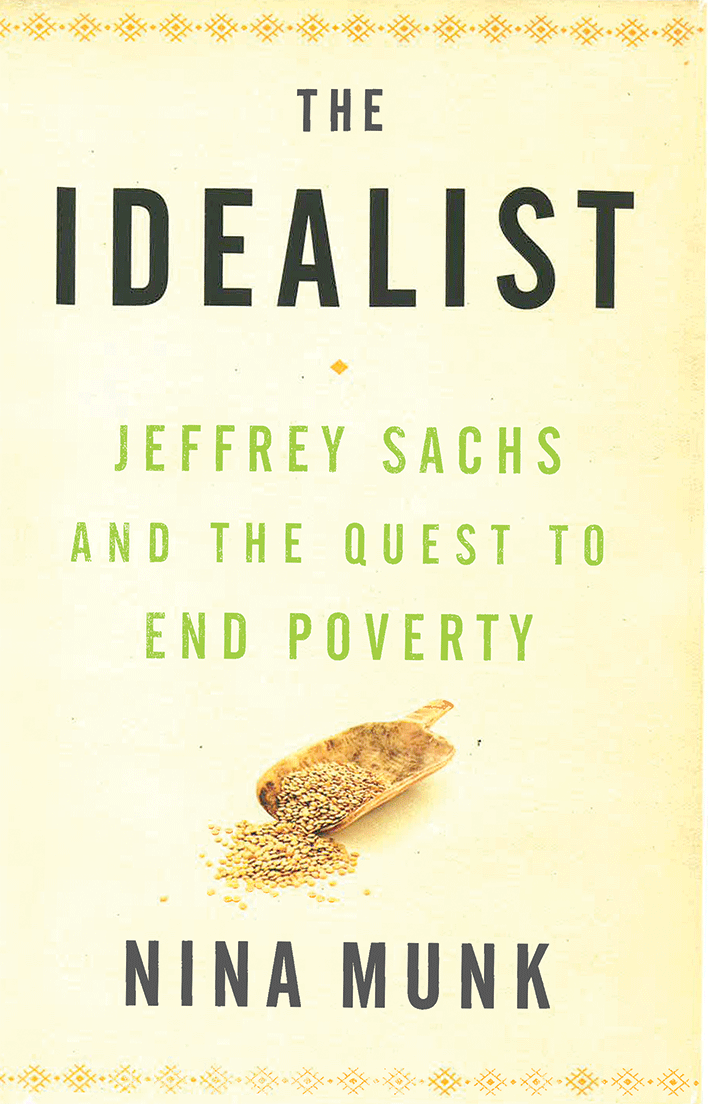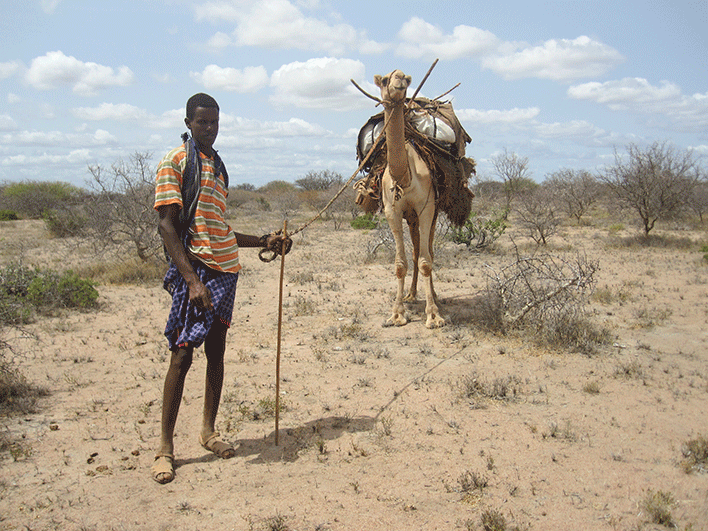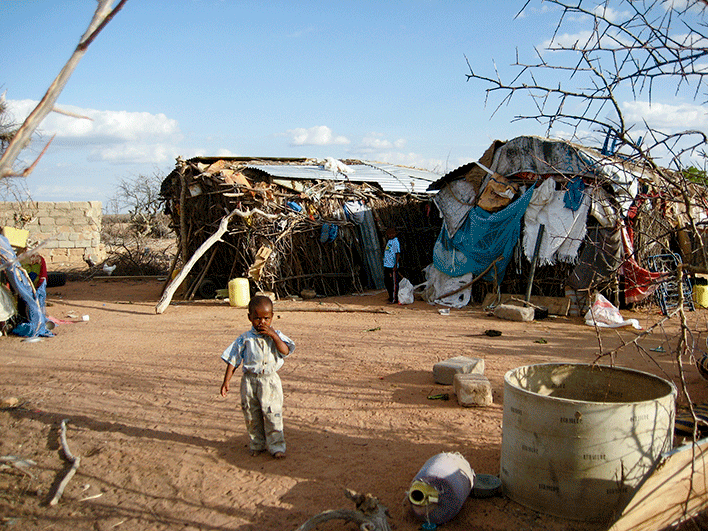Jeffrey Sachs, Columbia University economist and celebrity academic, made a splash ten years ago with his plan to engineer the end of poverty as we know it. His philanthropically funded Millennium Villages Project (MVP) showered a few model African communities with aid, for the sake of demonstrating that their abject poverty was the result of surmountable cultural barriers coupled with a lack of outside investment. The professor (who had done some admirable work helping stanch inflation in several countries emerging from communism) had it all figured out.
Sachs’s book was a bestseller, and then Hollywood anointed him as the savior of Africa in such works as the MTV documentary The Diary of Angelina Jolie and Dr. Jeffrey Sachs in Africa. (Sachs likens his project to an “Extreme Village Makeover.”) In Nina Munk’s book The Idealist, however, he is a much more ambivalent figure. His passion for the poor pushes aside apathy and cynicism, but also prudence and attention to unintended consequences. His intelligence is commanding, but leaves no room for other input. Against sludgy bureaucracies and inept politicians he is a furious force, but his righteous indignation does not distinguish between louts and perceptive critics.

Munk spent six years shadowing Sachs and reporting on his village projects. She sat with him in presidential palaces where he attempted to rouse Tanzania’s leaders and Uganda’s president to action. She watched him shout down a malariologist he encountered on an airplane. She observed as “villagers danced for him, dignitaries put on their Sunday suits and praised him, dozens of photos were snapped, and just before his arrival, schools and clinics were scrubbed clean.”
Munk set out to write the story of the MVP without any preconceptions beyond her expertise as a financial journalist. Sachs’s enthusiasm was infectious, and his philosophy seemed logical at the start: poor villagers dwell in such extreme poverty, with so many interlocking problems, that any single intervention would be worthless. A chronic malaria patient, for instance, does not have the energy for entrepreneurship, so “development” in a capitalist sense is impossible. Sachs’s solution: pour money into everything at once, from public health to infrastructure to agronomy, with the hope of evolving a foundation for greater development. He started with an initial gift of $50 million from George Soros and $70 million from other donors.
His projects were organized by five-year plans, but all too predictably the villages did not keep pace with the New York office’s script. Munk focuses on two model locations. The first is Dertu, a dusty crossroads for camel-herding Somali nomads in northeast Kenya. In addition to public-health and education interventions (malaria nets, free lunches to entice children to attend school, employing itinerant teachers to follow the herdsmen), the plan for Dertu calls for changing the quality and marketability of livestock—the region’s only commodity. The MVP planners, however, collide with local culture.
They fail at their principal goal of opening a local livestock market where a more liquid trade in camels could occur without the dayslong trek to the region’s capital. The problem? “The whole concept of selling one’s livestock is antithetical to Somali values,” Munk learns. Rather than a commodity like cotton or oranges, camels are “an end in themselves.” They are a signifier of a Somali herdsman’s manliness, honor, piety, and other virtues that have little place in most Westerners’ notion of “development.”

MVP planners tried to open a livestock market, failing to realize that Somalis do not sell their camels. (Nina Munk)
MVP planners tried to open a livestock market, failing to realize that Somalis do not sell their camels. (Nina Munk) What about the occasions where Somalis, in a pinch, do reluctantly sell their animals? The belief that the long journey to a distant market was inhibiting trade was also misplaced. As the local MVP director told Munk after ruminating on his failure, “These pastoralists, they will travel even 400 kilometers to get an extra hundred shillings.” Time is not money when you are a nomad.
In his writings, technocratic Sachs is dismissive of culture as a barrier to development. “What look like immutable social values,” he argues, “turn out to be highly malleable to economic circumstances and opportunities.” He is proven wrong by the residents of Dertu and other spots in the real world.
Many of the people Sachs sets out to aid don’t necessarily even regard themselves as poor. The Dertuites style themselves the lineal descendants of Abraham, take pride in their way of life, and are uninterested in exchanging it for something else. From the locals’ point of view, the fruits of Sachs’s intervention in their home region are depressing. Rather than living on the range, some of their neighbors become “drop-outs” who live on handouts.
The people of Ruhiira, a lusher outpost among the rolling hills of southwestern Uganda, are not as culturally impermeable as the Somalis of Dertu. Yet here too, the project’s big schemes run up against local notions of economy and agriculture. Growing the staple crops of a subsistence lifestyle (like matoke, the bananas that are Uganda’s most popular foodstuff) is deemed undesirable by the MVP bureaucracy. They push food crops that are less prized but have commercial promise (like maize), or specialties that could command a high price on the international market (like cardamom).
Sachs’s regional director convinces some Ruhiirans to grow maize, and with the purchase of fertilizer, a laudable bumper crop is produced. But selling the output proves nearly impossible. Transport devours the profit margin.

The program’s sudden largesse on select villages attracted itinerants and squatters, giving rise to shantytowns. (Nina Munk)
The program’s sudden largesse on select villages attracted itinerants and squatters, giving rise to shantytowns. (Nina Munk) Residents become desperate to trade so they can buy the foods they actually want to eat (they regard corn as “school food” or “prison food”). Soon, with the maize either spoiling or being sold at giveaway prices, the market collapses. Villagers ask, not unreasonably, why don’t we just grow what we like to consume?
Sachs, meanwhile, cannot understand why Ugandans and other Africans aren’t making greater use of fertilizer. Drawing on the work of Esthler Duflo, an M.I.T. economist who has worked closely on the subject, Munk notes that at the beginning of the planting season “nearly every farmer intended to use and could afford to buy at least a small amount of fertilizer.” Yet when the time came, for their own reasons, only one third of them did.
The MVP project’s massive free distribution of malaria nets creates other problems. The handouts put local vendors out of business. Then there is no supply when nets have to be replaced. Munk’s book details the premature babies who die because the village to which GE has donated electric incubators has no electricity.
The Millennium Villages Project was supposed to have reached successful completion this year. Instead, the project grinds along with few triumphs and no end in sight. Certain humbler long-term efforts that worked with human nature and local culture (like the land-ownership transfers described on pages 46-49), instead of against them, could have wrought much bigger effects for far less money. But of course that wouldn’t have been as exciting as building a utopian community.
Travis Kavulla has worked in East Africa, and studied economic development as a Gates Scholar at the University of Cambridge.
